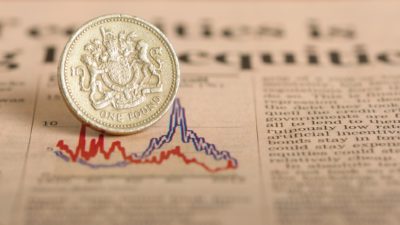What does the stock market return over the long run? For a long time, no one knew.
But in 1960, in an attempt to find out, investment bank Merrill Lynch donated [US dollars] $50,000 to the University of Chicago to establish the Centre for Research in Security Prices.
As the Financial Times’ global finance correspondent Robin Wigglesworth relates in his fascinating book Trillions — a history of the index tracker industry — both Merrill and the University underestimated the effort that would be involved. It wasn’t until four years and [US dollars] $250,000 later that the answer emerged.
Which was this, writes Mr Wigglesworth: “Overall, someone investing money in all of the stocks of the New York Stock Exchange in 1926, and reinvesting all dividend payments, would have made 9% annually by 1960 — far higher than previously thought.”
And, as he goes on to point out, this was something of a bombshell: hitherto, most investors had regarded corporate and government bonds as both higher-returning and safer over the long run.
Plus, for the first time, it became possible to tell if investors’ individual portfolios were beating the market as a whole — or not.
The Footsie’s one thing, our own portfolios quite another
Trillions has been an interesting book to read. Until the advent of the computer, calculating stock market indices — especially at scale, such as the FTSE All-Share — simply wasn’t practical. Real-time index calculation, even less so.
Nowadays, we think nothing of knowing how the Footsie is performing minute by minute throughout the trading day.
Passive income stocks: our picks
Do you like the idea of dividend income?
The prospect of investing in a company just once, then sitting back and watching as it potentially pays a dividend out over and over?
If you’re excited by the thought of regular passive income payments, as well as the potential for significant growth on your initial investment…
Then we think you’ll want to see this report inside Motley Fool Share Advisor — ‘5 Essential Stocks For Passive Income Seekers’.
What’s more, today we’re giving away one of these stock picks, absolutely free!
But knowing how the Footsie is performing isn’t the same as knowing how our own personal piece of the stock market is performing — the stocks in our own portfolios, in other words.
We can guess. We can feel good — or bad — about it, based on the gains or losses that we’ve made. But just looking at the figures that own our various brokers report doesn’t really provide much by way of comparative information.
Essentially, we’re in the dark, like all those pre-1964 investors who erroneously assumed that bonds performed better.
DIY performance tracking
Which is why savvy investors don’t just rely on brokers’ (often crude) performance figures, but maintain their own independent analyses.
One easy way is to simply use one of the many third-party public-domain portfolio tracking tools that are available. Google’s once-excellent portfolio tool has sadly been retired, alas. But plenty of other free tools are around: Microsoft, Yahoo, the Financial Times, and more.
Which to choose? Look at the various comparative analyses on offer, and decide accordingly. The better tools give you one-year and 10-year gain figure, which can then be compared against your stock market index of choice.
Prepared to spend a little money? Companies such as Morningstar provide often excellent portfolio tools for a reasonably modest monthly subscription. These tend to go further, offering sectoral analyses and so forth.
Which to choose? Think about what comparative performance information that you’re ideally looking for, and decide accordingly.
Getting a handle on income
Some investors have concerns other than simply understanding the extent of the capital growth that they’re experiencing, however.
Income investors, for one. Sure, capital gains are great to have, but if you’re — say — retired, it’s your level of income that pays the bills.
How much income are you getting? Is it growing? How much by? And what yield are you getting, as a return on your investment? With ‘yield’ measured in terms of yield on current portfolio value, yield on individual current actual share prices, and ‘yield on bought cost’?
Here, third-party tools struggle: investors’ needs are simply too diffuse.
So it’s necessary to build your own income-oriented portfolio tool, as a spreadsheet.
Options for every ability level
This is both easier than you might think, and harder than you might think. But mostly, easier.
Easier, because it’s not conceptually difficult, and modern spreadsheet software goes a long way to making the task a lot simpler than it used to be.
And harder, because you’ll probably want to access current share prices from within your spreadsheet. Various user-built packages help to do this — some are available on the investment bullet board where I often hang out, for instance — but paid-for versions of Microsoft’s online spreadsheet software also include this functionality built in.
Note, though, that it isn’t mandatory to include current share prices: I’ve been tracking my dividend performance since 2005, and do so at the level of aggregate shareholdings.
In other words, I know the value of the dividends from each individual shareholdings, but I only calculate current-price and bought-cost yield on the aggregate income-earning portfolio.
Why bother with all this?
Because, quite simply, you’ll otherwise be in the dark as to your relative investment performance — as were all investors, prior to 1964.
You might be happy with that. But I’d urge you not to be. Your wealth is your future standard of living – and its growth, and the income that it throws off, will have a significant impact on that standard of living.
Don’t settle for second best.








